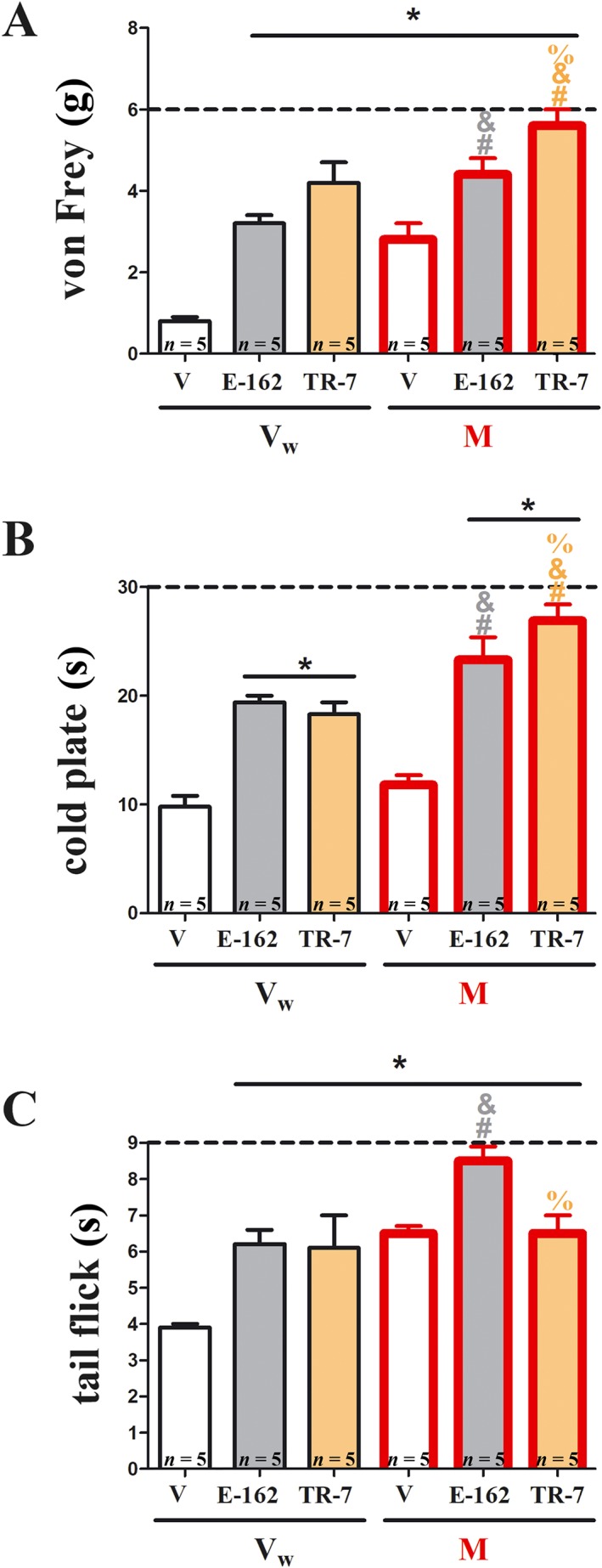Figure 4.

Effects of E‐162 or TR‐7 on morphine analgesia in mice with CCI. The effects of single i.p. administration of E‐162 or TR‐7 (10 mg·kg−1) on morphine (M; 5 mg·kg−1, i.p.) analgesia on day 7 following CCI to the sciatic nerve, were evaluated. Ninety minutes after antagonist administration, mice received a single injection of morphine or vehicle (water; Vw); behavioural tests were performed 30 min after injection. Mechanical allodynia was assessed by (A) von Frey test and thermal hyperalgesia by (B) cold plate test, and spinal nociceptive responses to heat‐induced pain were measured by (C) tail flick test. The data are presented as means ± SEM. The results were statistically evaluated using one‐way ANOVA and were further analysed with Bonferroni's post hoc test. * P < 0.05, significantly different from vehicle (25% DMSO/water)‐treated mice; # P < 0.05, significant differences between vehicle (25% DMSO/water)‐treated and antagonist‐treated mice that had received a single dose of morphine; & P < 0.05, significant differences between antagonist‐treated mice that received a single dose of vehicle (water)‐treated and antagonist‐treated mice that received a single dose of morphine; % P < 0.05, significant differences between E‐162‐treated and TR‐7‐treated mice. The number of animals used in the study is highlighted on the bar graph.
